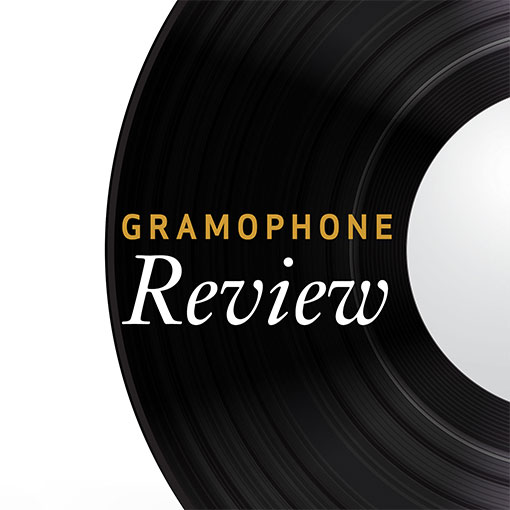Schulhoff Symphonies
View record and artist detailsRecord and Artist Details
Composer or Director: Ervín Schulhoff
Label: CPO
Magazine Review Date: 1/1995
Media Format: CD or Download
Media Runtime: 70
Mastering:
DDD
Catalogue Number: CPO999 251-2

Tracks:
| Composition | Artist Credit |
|---|---|
| Symphony No. 1 |
Ervín Schulhoff, Composer
Ervín Schulhoff, Composer George Alexander Albrecht, Conductor Philharmonia Hungarica |
| Symphony No. 2 |
Ervín Schulhoff, Composer
Ervín Schulhoff, Composer George Alexander Albrecht, Conductor Philharmonia Hungarica |
| Symphony No. 3 |
Ervín Schulhoff, Composer
Ervín Schulhoff, Composer George Alexander Albrecht, Conductor Philharmonia Hungarica |
Author:
Like many in the lost, inter-war generation of Czech-German composers, Erwin Schulhoff was drawn to a wide range of idioms from Schoenbergian expressionism to Stravinskian neo-classicism. His love of jazz is well known, but he was also prone to an open-air modal folkiness which gives even his most eclectic scores a fairly distinctive profile. The symphonies recorded here show him stylistically in transition over a decade of compositional activity. By the time of his death at the hands of the Nazis, the Dadaist prankster had remade himself as a socialist realist composer of big statements and, latterly, a Soviet citizen.
The First Symphony, shamelessly playful and very much a product of its time (1925), has Hindemith kitted out in the trappings of cabaret chic. Its folk colouring is of the sophisticated urban variety complete with pseudo-orientalism and jazz, though not without a hint of Berg in the slow movement. The hedonism of the rest is infectious, if not noticeably symphonic. There is conceivably more substance in the slimmed-down Second Symphony (1932). Its personal brand of neo-classicism recalled for me Kurt Weill's own not much more familiar Second Symphony. Here, Schulhoff tones down but extends the reach of his premature polystylism to incorporate the obvious Viennese models. The last movement anticipates the Beethovenian sense of lift-off achieved by Martinu's symphonic finales of the 1940s. (It may be that Albrecht's Allegro con spirito is excessively cautious here.)
By the time of the Third Symphony (1935), the political situation had worsened and the characteristic bassoon figures with which Schulhoff launches his argument have acquired less jaunty overtones. The depressive tread of the accompaniment is revealed as a weary ostinato which underpins the whole of the first movement, limiting its scope for harmonic manoeuvre and conjuring up some menacing Bolero of mob rule. Mahler as well as Marx lies behind the rhetoric of its tenacious march. In this performance at least the second movement threatens to topple over into horror-film inarticulacy (the marking is Grave, ma deciso) and the finale presses home victoriously with all the dated grandiloquence of 1930s-style ideological commitment. I'm not certain that this highly cinematic music transcends its era—unlike say, the best of Klein and Ullmann—but the disc as a whole is well worth hearing. Albrecht secures generally convincing results from his smallish band of players, flattered as they are by CPO's generous acoustic setting. Completists will be intrigued by the thought that there are a further five Schulhoff symphonies in the cycle, not all of them finished by the composer.'
The First Symphony, shamelessly playful and very much a product of its time (1925), has Hindemith kitted out in the trappings of cabaret chic. Its folk colouring is of the sophisticated urban variety complete with pseudo-orientalism and jazz, though not without a hint of Berg in the slow movement. The hedonism of the rest is infectious, if not noticeably symphonic. There is conceivably more substance in the slimmed-down Second Symphony (1932). Its personal brand of neo-classicism recalled for me Kurt Weill's own not much more familiar Second Symphony. Here, Schulhoff tones down but extends the reach of his premature polystylism to incorporate the obvious Viennese models. The last movement anticipates the Beethovenian sense of lift-off achieved by Martinu's symphonic finales of the 1940s. (It may be that Albrecht's Allegro con spirito is excessively cautious here.)
By the time of the Third Symphony (1935), the political situation had worsened and the characteristic bassoon figures with which Schulhoff launches his argument have acquired less jaunty overtones. The depressive tread of the accompaniment is revealed as a weary ostinato which underpins the whole of the first movement, limiting its scope for harmonic manoeuvre and conjuring up some menacing Bolero of mob rule. Mahler as well as Marx lies behind the rhetoric of its tenacious march. In this performance at least the second movement threatens to topple over into horror-film inarticulacy (the marking is Grave, ma deciso) and the finale presses home victoriously with all the dated grandiloquence of 1930s-style ideological commitment. I'm not certain that this highly cinematic music transcends its era—unlike say, the best of Klein and Ullmann—but the disc as a whole is well worth hearing. Albrecht secures generally convincing results from his smallish band of players, flattered as they are by CPO's generous acoustic setting. Completists will be intrigued by the thought that there are a further five Schulhoff symphonies in the cycle, not all of them finished by the composer.'
Discover the world's largest classical music catalogue with Presto Music.

Gramophone Digital Club
- Digital Edition
- Digital Archive
- Reviews Database
- Full website access
From £8.75 / month
Subscribe
Gramophone Full Club
- Print Edition
- Digital Edition
- Digital Archive
- Reviews Database
- Full website access
From £11.00 / month
Subscribe
If you are a library, university or other organisation that would be interested in an institutional subscription to Gramophone please click here for further information.





